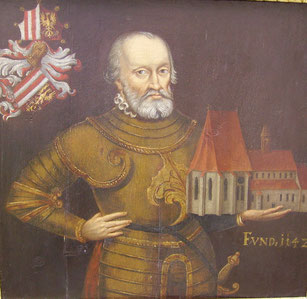Clam Castle... where History lives on

The earliest written records mentioning the castle date back to 1149. In those days it was a massive fortress with two towers each measuring over 40 meters high. These impressive structures are in fact still part of the castle’s present-day form.
The castle eventually fell into the hands of robber barons who struck fear into the local people. The unscrupulous behavior of these feudal landowners even led to their excommunication from the Catholic Church.
With powers shifting rampantly and constant political intrigues, it was common practice in the Middle Ages for the ownership of castles to change frequently.
These transitions naturally inspired new phases of construction. However, when the forefathers of the Counts of Clam finally arrived and took over in 1454, they brought more stability to the castle and the surrounding lands.

During the 30 year-war the Clam family had their own private army to defend the castle. In these times of turmoil and revolts Clam village also suffered a lot and
was burned down several times. Clam was besieged many times but no hostile troops ever managed to capture the castle. However, in the mid 17th century when the war was over, the castle was in a
very bad condition.

Under the regency of Johann Gottfried of Clam it was possible to renovate the entire castle. He started to transform the functional fortress into a comfortable castle as we see it today. He also built a church, a hospital and water pipes for the citizens of the village.
In the 18th century the wings housing the administration, the coaches and the horse stables were built. Today these wings form the outer yard.
Fortunately Clam castle also survived both world wars unharmed. Only the nuclear shelter, built in one of the castle’s cellars, is a reminder of the 20th
century.
Besides the Castle the estate includes several farmhouses, a riding school, a hydropower plant, farmland and forests.
Follow in the footsteps of the ancestors and gain better insight into life in a medieval castle as you learn about the history of the Counts of Clam who have been living here for over 550 years.
Burgmuseum Clam · Burg Clam bei Grein · Sperken 1 · A-4352 Klam · Oberösterreich






